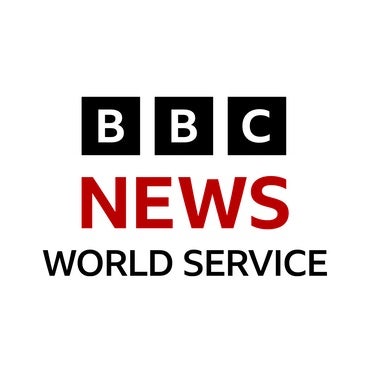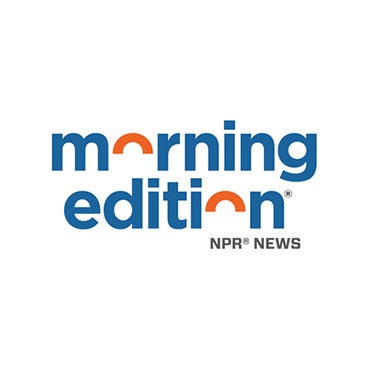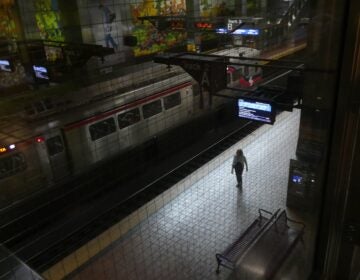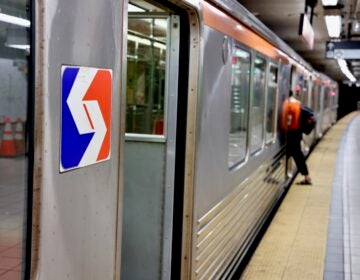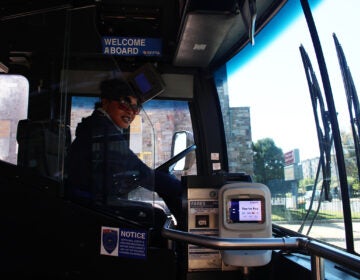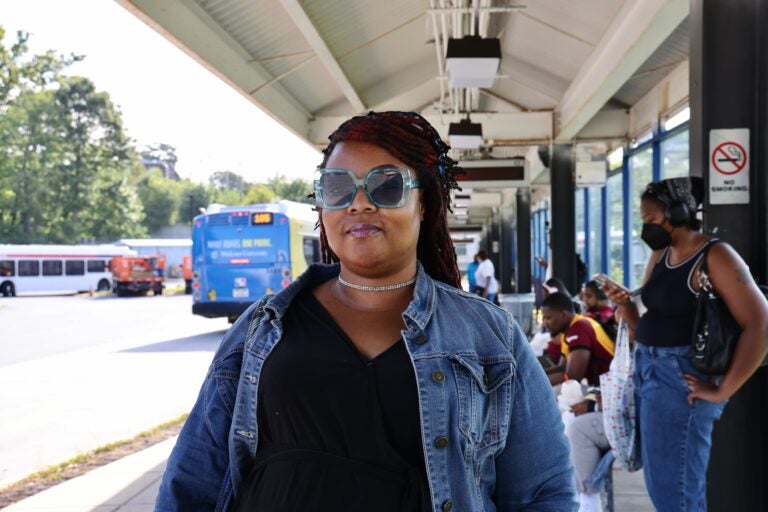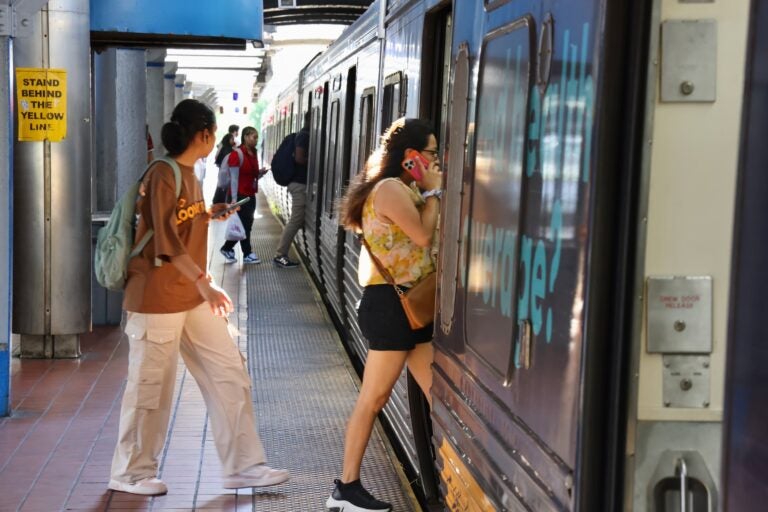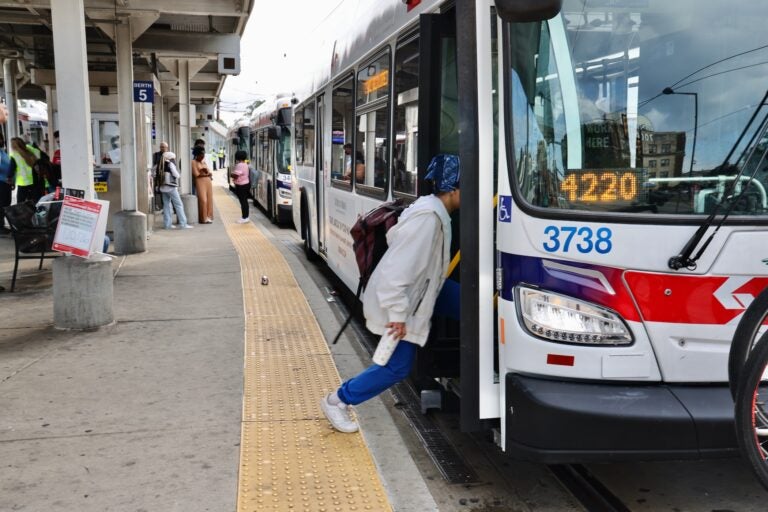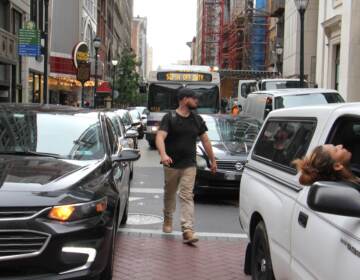Late to work and school, SEPTA passengers face cuts on a commute-heavy Monday
Passengers who regularly used eliminated bus routes were forced to find alternative ways to get to work, including ride-hailing services.
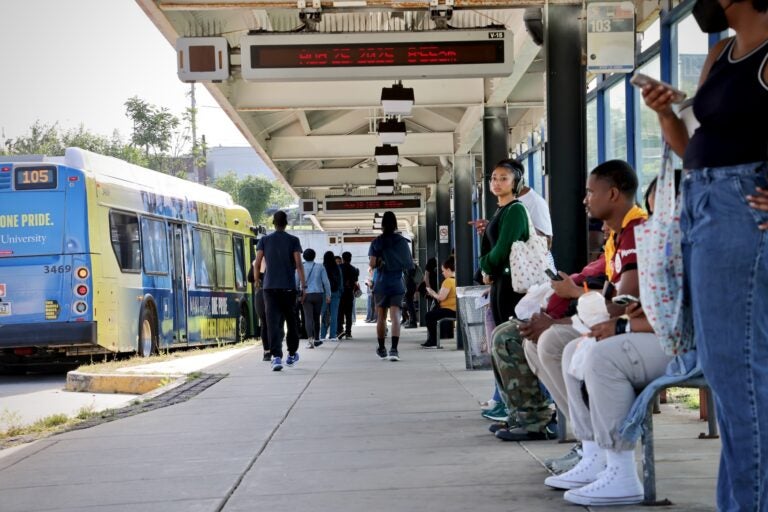
Buses line up at the 69th Street transportation center where many arrived early to adjust to new routes and schedules resulting from SEPTA cuts. (Emma Lee/WHYY)
From Philly and the Pa. suburbs to South Jersey and Delaware, what would you like WHYY News to cover? Let us know!
Eighteen-year-old posters at the 69th Street Transportation Center celebrate 100 years of service at the station, which opened to the public in 1907 and now handles approximately 35,000 passengers on an average weekday.
Located in Upper Darby Township just outside Philadelphia, the SEPTA hub is the western terminus for both the Market–Frankford Line and the Norristown High Speed Line, as well as trolley Routes 101 and 102 and 18 distinct bus routes.
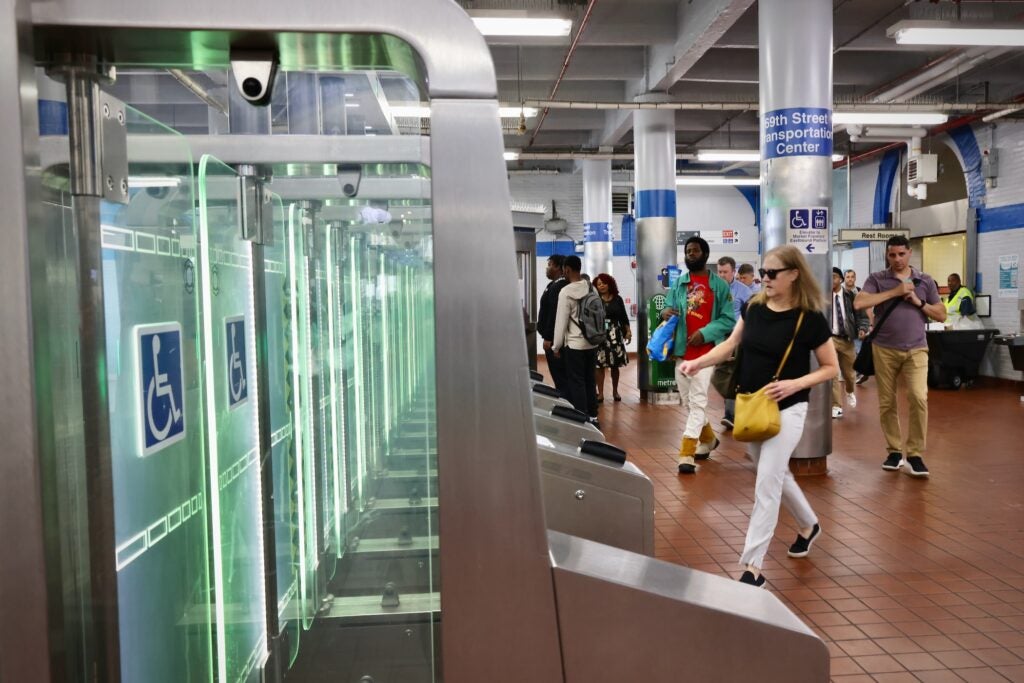
On Monday morning, however, some locals headed to work and school appeared frustrated or bewildered over the recent cuts that translate to longer and more complicated commutes for many of them.
For Philadelphia resident Shakira Moore, the changes mean earlier mornings and two additional transfers.
“I normally would take the 31 and it would take me to my job, so basically it was just a one-and-done ride,” she said. “Now it takes the 38, the L and the 103.”

Asked if she thinks her new schedule is sustainable, she said, “I don’t know. I’m not sure. It’s going to be hard.”
Amid a deepening fiscal crisis and a budget impasse in Harrisburg, SEPTA has begun implementing sweeping reductions, one of the most severe service rollbacks in its history, slashing all bus and rail service by 20%, eliminating 32 bus routes and reducing trips on nearly 90 existing lines.
SEPTA leaders have identified 69th Street as one of two hubs of most concern when it comes to crowding and wait times. 69th Street and the Frankford Transportation Center utilized many of the eliminated routes.
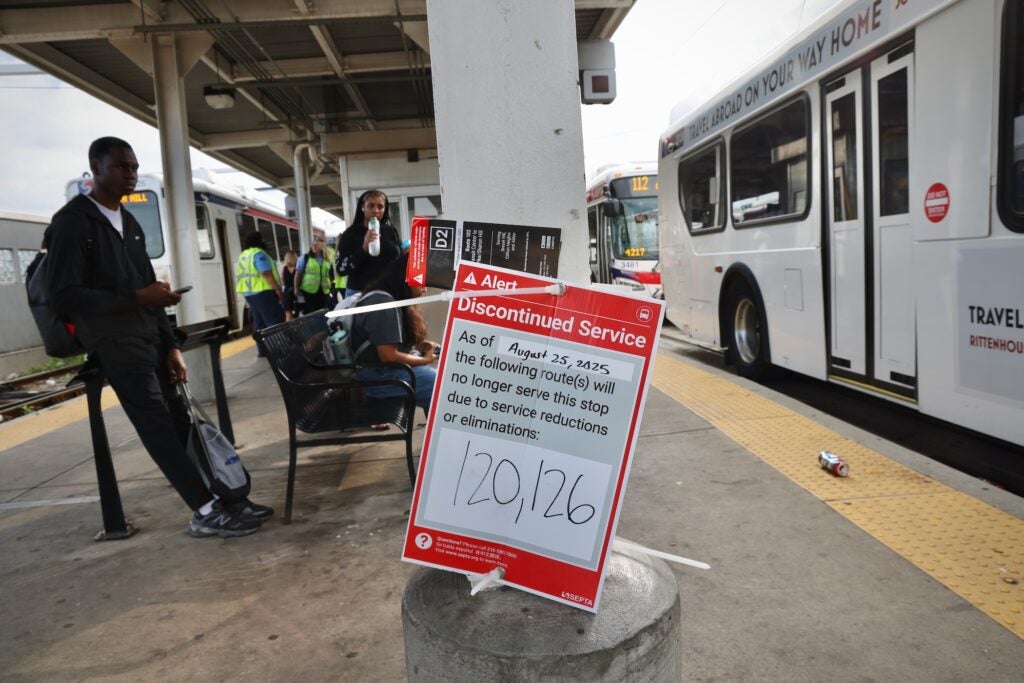
“People are having to go to alternate routes and those are our highest ridership locations, so we expect those to be a little more crowded than usual with people waiting,” said Andrew Busch, SEPTA’s director of media relations. “We haven’t had too many problems. We have our transit ambassadors and extra transit police officers out to assist people.”
The cuts started on Sunday, but more cuts went into effect Monday as morning commuters found themselves waiting for buses that didn’t exist or researching alternatives to get them to their destinations. The impact was exacerbated by the fact that Monday was also the first day of school after summer break for many students in the region.
Briana Hassan, who works for the School District of Philadelphia, said she worries about the impact it will have on students.
“I just think it’s just dumb because I don’t think it’s fair for the kids, because they got to go to school,” she said. “We all live in different places. People live in Collingdale, Darby, Philly. I just hope they figure something out and we get this all so we can all go to school, go to work.”

Hassan said she already has to take three buses to “go where I need to go” and complained that she sometimes doesn’t know if a bus is coming or if it’s just going to be late.
“I just feel like they need to start letting us know what’s going on because nobody’s not saying nothing to us,” she said.
More drastic cuts to come
To compound the issues, more cuts are slated for Jan. 1 when SEPTA will eliminate five regional rail lines, convert two trolley routes to buses, impose a 9 p.m. curfew on remaining rail services and close 66 stations. The drastic measures — together amounting to reductions of up to 45% of all services — arise from a projected $213 million budget shortfall exacerbated by the end of federal relief aid and rising operating costs.
That has prompted concern from residents, city officials and businesses about the potential backlash in mobility and economic vitality, especially as millions of additional visitors from around the country are expected to attend semiquincentennial celebrations next year.

Kyree Clyatt, a visitor from Virginia here to attend a family funeral, was hoping to get on a 31 bus but was surprised to find it was eliminated.
“I’m like, where’d the bus go? What happened to it? It’s just gone,” he said, as he waited for his cousin to pick him up from the transportation center. “I can’t wait to see how we’re all going to get to this funeral.”
A Philadelphia native, Clyatt now lives in Richmond, Virginia, where much of the public transportation is currently free under their Zero Fare program. Clyatt says that he usually rides the Richmond buses to get wherever he needs to go.
“I left because Philly is not doing good, but this is going to just make it worse,” he said about the SEPTA reductions. “It’s going to make more people more agitated … just adding stress to people’s lives that are already stressful living in the city. That’s why I left. It’s ridiculous.”
Pointing fingers at fare evaders
Riders also said they were upset that they’re going to start paying more for services starting next month, when SEPTA is planning a 21.5% average increase in fares, which will take the base bus fare from $2.50 to $2.90.
However, several of those interviewed, including Hassan, said that they believe that fare evaders are as much to blame as politicians.
“I don’t think that’s fair for some people who do pay and some people who don’t,” she said.
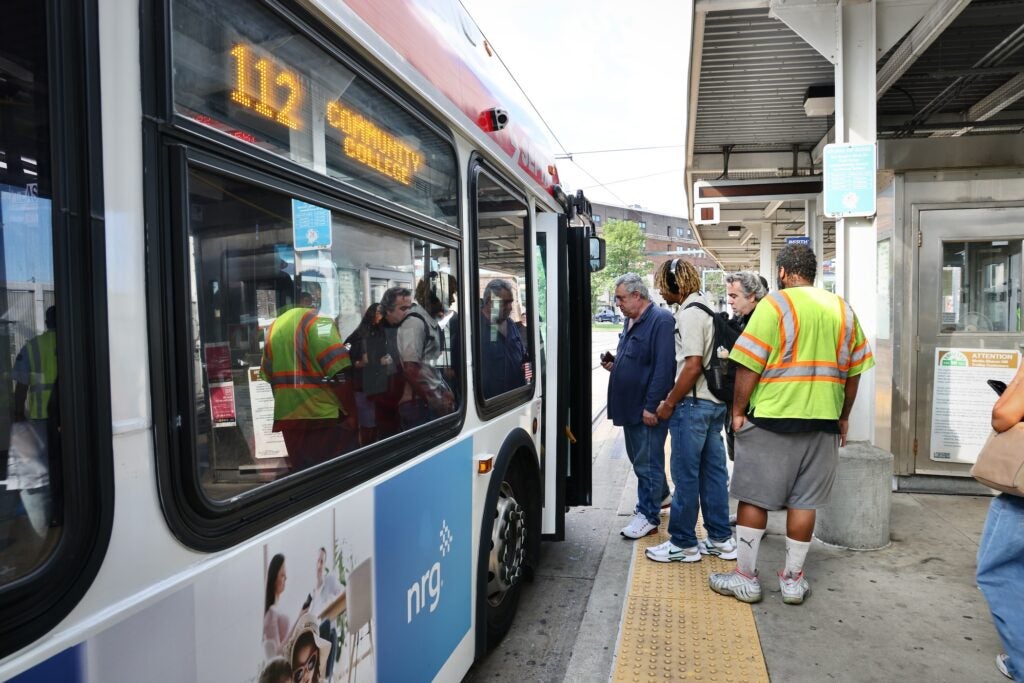
Fare evasion has been a focal point in negotiations around SEPTA funding, with Republicans looking to increase enforcement. Moore says she appreciates that SEPTA has been cracking down more lately.
“They should have made a fine for those that don’t pay,” she said. “They should have done that at the beginning, after the pandemic was over. Not now. For those that pay, we’re suffering for the ones that don’t. And the deficit, I truly believe, is because of the entitlement of a lot of the public.”

Get daily updates from WHYY News!
WHYY is your source for fact-based, in-depth journalism and information. As a nonprofit organization, we rely on financial support from readers like you. Please give today.
